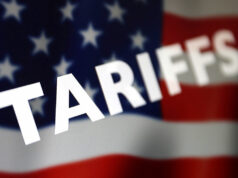Are customer e-mails more important than messages from colleagues?
Our department head often tells us to give priority to our customers. This was tested last week, when my boss informed me of the complaints of my co-workers who claim that I don’t pay much attention to their e-mails. Incidentally, 90% of our workforce is working from home, including myself. I told my boss that I’m swamped daily with an average of 140 e-mails from customers and colleagues and I need to spend about 10 hours a day to manage them all. My boss told me rather philosophically that I need to be smart in dealing with all inquiries from both employees and customers without explaining how I can do it. Please give me your advice. — Tony’s Thunder.
A Japanese painter drew a small picture on a large canvas. In one corner of the painting was a small tree and on the limbs of a tree were birds and the image covered only one-eighth of the canvas. All the rest of the canvas was bare. When he was asked if the painting was complete. The painter said yes, adding:
“I have to leave room for the birds so they can fly.”
Many times, we fill up our daily schedule with so many things in work and in personal life that there is not enough room for our “birds to fly.” Because of our busy schedules, we miss out on what to do in an “open space,” even if we know that our customers should be given first priority according to Doug Conant, CEO of Campbell Soup, who clings to an important principle in people management:
“To win in the marketplace, we must first win in the workplace.”
Even if you pay attention to customers and prioritize their needs and wants, you will meet with little success without the cooperation of your colleagues. In fact, some of them could take revenge against you by withholding support, making your interaction with customers difficult. This brings us to an important principle in management that is corollary with Conant:
To win our customers’ hearts and minds, we must first win our colleagues’ hearts and minds.
You should not take your boss’s instructions literally. Surely, there’s always a better way of doing things in a digital workplace where practically everyone works from home. If we’ll look at it closely, I’m sure your colleagues’ e-mails will not account for more than half of your working time.
Assuming you got only around 20 e-mails a day from your colleagues, then that’s only 14% compared to 86% of e-mails from customers. It’s not much if you seriously think about it. But imagine the adverse implications for your working relationship with colleagues if you delay replying.
FIVE SMART SOLUTIONS
To give you some practical ideas on how to manage your daily e-mails, treat everyone as an important customer whose every inquiry must be managed as fast they pop up in your inbox. Regardless of whether you classify them as “external” or “internal” customers, you can do a lot with the following ideas:
One, spend only about three minutes or less answering every e-mail. That is, if you’re dealing with your colleagues. Otherwise, spend as much time as necessary when dealing with external customers. That’s because you have to project differently as you try to represent the organization. In any case, get to the point quickly and use simple words and phrases.
You can stall a bit by clarifying some issues by asking well-meaning questions: “Pardon me Eric, what kind of information do you want from me?” Or, you can ask: “Am I correct to assume that you want more information about ABC account?”
Two, keep your replies short and simple. The KISS (keep it short and simple) principle is a timeless approach for communicating effectively. Get to the point without leaving out important details. Use numerical markers like 1), 2) and 3) instead of “word” markers like “one, two or three” to separate one idea from another, unless you’re a newspaper columnist like me who follows the publisher’s style.
Another option is to use alphabet markers like a), b) and c) to separate one idea from another. This way, you can readily focus on each and every item.
Three, use the “touch move” rule from chess when replying to e-mails. Employ the “move your touched piece” rule as soon as you open an e-mail. Do something as soon as an e-mail pops-up in your inbox. You can ask clarifying questions or give a brief but professional one or two-liner reply.
Never open an e-mail and then procrastinate on the reply. Opening and then closing e-mails is counterproductive. You also avoid situations like forgetting about e-mails as you tackle other tasks.
Four, avoid CC-ing your internal and external customers. The era of typewriters and carbon copies is long gone. Times have changed. The real meaning of “CC” should be crowd control. That means giving only a copy of your e-mail to people who matter the most, not even your boss or department head, unless they are micromanagers.
Don’t commit the same mistake with BCC (“blind crowd control”) to avoid giving unnecessary, superfluous or confidential information which anyone can accidentally disseminate by hitting the “reply all” button.
Last, establish a 24-hour reply rule with your internal customers. If there’s an inquiry that requires a comprehensive or detailed answer, agree with your boss and work colleagues that everything will be answered within the day, at least during the lockdown. This rule should not be set in stone, allowing for exceptions to cover emergency situations.
When you return to your physical office and going eyeball-to-eyeball with colleagues, an e-mail reply can be dispensed with in favor of a short visit to your colleagues’ work stations. This is beneficial for your physical health as well, allowing time for your posture and eyes to recharge after all that time seated before a computer monitor.
GIVE ‘THANKS’ ALWAYS
“The art of effective e-mailing begins with how you end,” says Betsy Mikel in Inc.com. Citing a recent study of 350,000 e-mails by productivity software developer Boomerang, Mikel says “that certain e-mail closings deliver higher response rate.” From a list of familiar sign-offs like “sincerely,” “cheers,” “warmly,” “thanks,” “regards,” “best,” “take care,” “ciao,” “talk soon,” and many others, Boomerang discovers the best approach is when you “express gratitude” to people’s e-mails.
Since you spend so much time working even if you’re working from home, you need to practice simple and basic protocols with all people. You may be in deep with the work you need to get done, but there is no reason for you to simply ignore colleague e-mails in favor of those of your customers. Whatever you’re doing, take a deep breath to clear your head and write an e-mail in a calm, focused, and professional tone.
Send anonymous questions to elbonomics@gmail.com or via https://reyelbo.consulting



